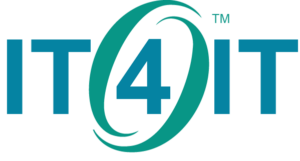Introduction to IT4IT
Agenda
Here’s what we’ll cover in this blog. First, we’ll dive into what IT4IT is all about. Then, we’ll move on to its key concepts and how it functions. After that, we’ll explore the benefits of IT4IT, Towards the end we’ll also look at some of its essential tools. So, let’s get started!
What is IT4IT?
 IT4IT is a reference architecture and framework created to manage IT businesses. Developed by The Open Group, it provides a standardized approach to help organizations modernize their IT functions. It’s all about improving service delivery, enhancing efficiency, and aligning IT with business goals. IT4IT is especially useful for companies dealing with everyday challenges like cloud management, automation, fast-tracking product or service delivery, and implementing Agile or DevOps practices, especially during digital transformations.
IT4IT is a reference architecture and framework created to manage IT businesses. Developed by The Open Group, it provides a standardized approach to help organizations modernize their IT functions. It’s all about improving service delivery, enhancing efficiency, and aligning IT with business goals. IT4IT is especially useful for companies dealing with everyday challenges like cloud management, automation, fast-tracking product or service delivery, and implementing Agile or DevOps practices, especially during digital transformations.
Key Concepts of IT4IT
At the core of IT4IT is the concept of the IT value chain, which is made up of four value streams:
- Strategy to Portfolio (S2P): This stream ensures that IT strategy and investment portfolios align with the organization’s goals.
- Requirement to Deploy (R2D): R2D covers the development and deployment of IT services, from gathering requirements to delivering operational solutions.
- Request to Fulfil (R2F): This stream focuses on managing service catalogs, requests, and fulfillment processes, ensuring services are delivered efficiently to end-users.
- Detect to Correct (D2C): Finally, this stream handles operations, monitoring, and issue resolution to maintain service quality.
The IT4IT reference architecture outlines the components and data objects necessary to manage IT holistically, integrating best practices and aligning IT functions with business objectives. It also promotes a service-oriented model, supporting IT organizations in providing services that better meet business needs.
Benefits of IT4IT
Implementing IT4IT comes with several benefits, each designed to improve the effectiveness of IT management within organizations. Let’s go through them:
- Enhanced Visibility and Integration: IT4IT improves transparency across the organization by integrating tools and processes, ensuring everyone stays aligned.
- Standardized Approach: It provides a structured, consistent way to manage IT, which helps keep things organized and aligned with business goals.
- Support for Digital Enterprises: IT4IT helps digital organizations continuously improve by aligning IT operations with business objectives.
- Cost Reduction and Efficiency Gains: By using IT4IT’s value chain approach, organizations can reduce IT service management costs and streamline workflows.
- End-to-End Traceability: IT4IT allows for comprehensive tracking across the entire IT lifecycle, making it easier to monitor and manage services.
- Flexibility and Scalability: The framework is adaptable, so it can be implemented in stages and scaled as needed.
- Alignment with Business Goals: IT4IT ensures that IT and business strategies are aligned, directly contributing to organizational success.
Essential Tools for IT4IT
Now, let’s look at some essential tools supporting IT4IT. There are six major categories of tools:
- Service Portfolio Management Tools (S2P): Tools like ServiceNow and JIRA Portfolio help manage IT portfolios and align investments with business strategies.
- Application Lifecycle Management (ALM) Tools (R2D): Azure DevOps, GitLab, and Jenkins are widely used for integrating development, testing, and deployment, supporting continuous delivery.
- Service Catalog and Request Management Tools (R2F): Tools like BMC Remedy and Cherwell Service Management handle service catalog management, requests, and workflow automation.
- IT Operations Management Tools (D2C): Splunk, Nagios, and Dynatrace offer monitoring, event management, and analytics for IT operations.
- Enterprise Architecture Tools: TOGAF and Sparx Systems Enterprise Architect provide methodologies and tools for aligning IT architecture with business strategies.
- IT Financial Management Tools: Apptio helps organizations manage IT finances, optimize spending, and make data-driven investment decisions.
Conclusion
IT4IT is a critical architecture or framework that is created to manage the IT business. It’s all about improving service delivery, enhancing efficiency, and aligning IT with business goals. The IT4IT framework provides a flexible, production pathway approach that supports your digital business on its continuous improvement journey to deliver digital products better, faster, cheaper, and safer.
By – Mayank Gandhi